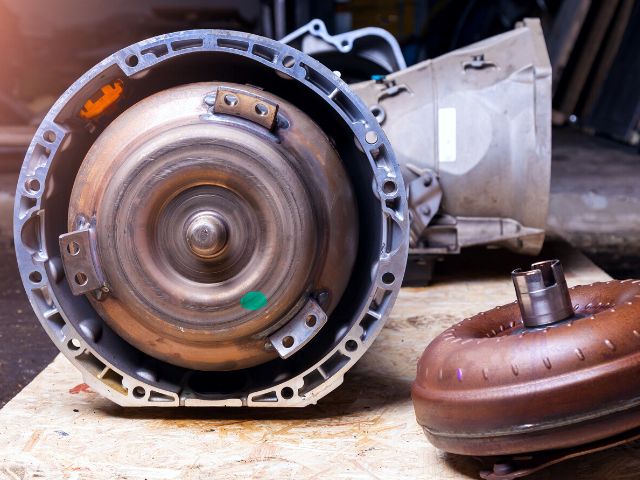
Transmissions are complicated mechanisms and a challenge to understand. One place to start is to understand the role of one of the most important parts of the vehicle: the torque converter. Continue reading to find out more about the parts that make up the torque converter and why it’s valuable.
Before you can understand the torque converter, you should know what torque means. Torque is the measure of twisting force that causes an object to rotate around an axis. The axis is typically a fixed point in the center of the mechanism.
Force is what allows an object to accelerate. Therefore, the force applied to the torque converter plays an essential role in your vehicle’s ability to change speeds when driving.
Fluid is one of the most important components of the torque converter. Since transmissions are hydraulic systems, the fluid pumps the necessary force to the torque converter to control the varying speeds.
When you press down on the gas pedal, the fluid pressure increases through the input shaft. In return, the system generates power that then distributes to the wheels. The wheel axles begin to spin as determined by the pressure on the pedal.
If you release the pressure from the gas pedal or apply the brakes, then less fluid pumps throughout the system. The vehicle will slow down since there’s less force distributed throughout.
Four essential components define the system of the torque converter. Without the impeller, turbine, stator, and clutch, the torque converter wouldn’t function properly.
The impeller is the pump that uses the energy from the engine and transmits that to the fluid. As the impeller spins in a circular motion, fluid enters the center. Then, it forces the fluid to exit through the fins. It propels outward from the impeller toward the turbine.
The turbine attaches to the output shaft of the torque converter and sits opposite the impeller. It receives the fluid from the impeller and enters the outside of the turbine. Once it moves and changes direction from inside the fins, the fluid then exits from the center.
The stator sits between the impeller and the turbine. The circular design includes fins on the outer section to redirect fluid from the turbine. As it turns, it spins in the opposite direction of the engine.
The job of the stator is to move the fluid before it can reach the impeller. If the fluid reached the impeller, it would negatively impact the rotational energy of the system.
This is one of the most crucial components of the torque converter. Without it, fluid would disperse throughout the system from all angles. It’s an important piece that improves efficiency and maintains the proper movement of the fluid.
When slippage occurs in the torque converter during acceleration, the lock-up clutch is a helpful tool that directly connects the engine and the transmission. The fluid pressure allows the clutch to lock into place. Therefore, the vehicle is less likely to fall out of gear during various speeds and gains improved gas mileage.
The torque converter is one of the parts of an automatic transmission that plays a key role in a vehicle. Understanding how it functions and the part it plays within the transmission is one of the best ways to properly understand your vehicle.
24World Media does not take any responsibility of the information you see on this page. The content this page contains is from independent third-party content provider. If you have any concerns regarding the content, please free to write us here: contact@24worldmedia.com